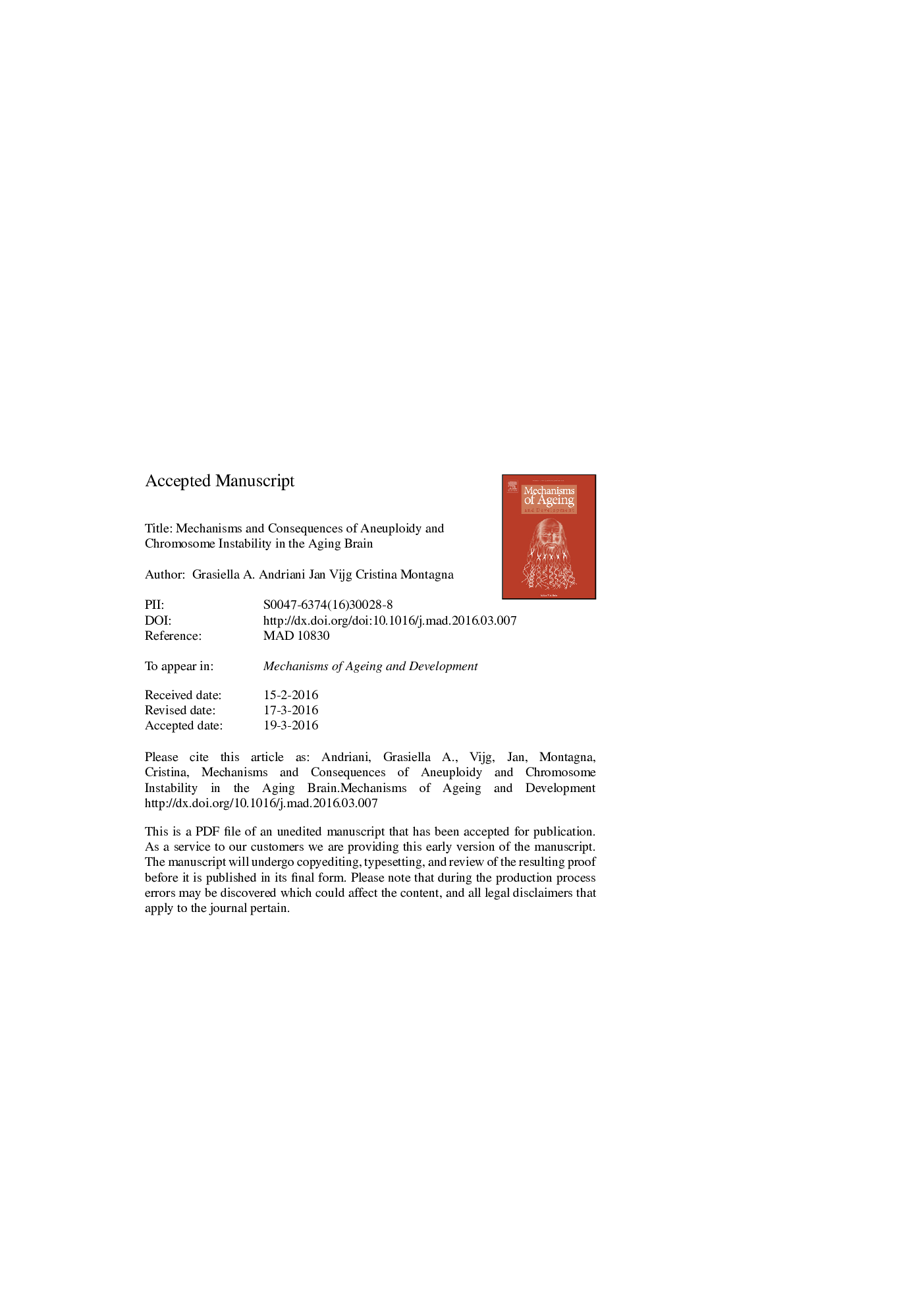| Article ID | Journal | Published Year | Pages | File Type |
|---|---|---|---|---|
| 5503724 | Mechanisms of Ageing and Development | 2017 | 59 Pages |
Abstract
Aneuploidy and polyploidy are a form of Genomic Instability (GIN) known as Chromosomal Instability (CIN) characterized by sporadic abnormalities in chromosome copy numbers. Aneuploidy is commonly linked to pathological states. It is a hallmark of spontaneous abortions and birth defects and it is observed virtually in every human tumor, therefore being generally regarded as detrimental for the development or the maturation of tissues under physiological conditions. Polyploidy however, occurs as part of normal physiological processes during maturation and differentiation of some mammalian cell types. Surprisingly, high levels of aneuploidy are present in the brain, and their frequency increases with age suggesting that the brain is able to maintain its functionality in the presence of high levels of mosaic aneuploidy. Because somatic aneuploidy with age can reach exceptionally high levels, it is likely to have long-term adverse effects in this organ. We describe the mechanisms accountable for an abnormal DNA content with a particular emphasis on the CNS where cell division is limited. Next, we briefly summarize the types of GIN known to date and discuss how they interconnect with CIN. Lastly we highlight how several forms of CIN may contribute to genetic variation, tissue degeneration and disease in the CNS.
Keywords
DnmtBERHDACHSRAtaxia telangiectasiaDNA methyltransferasesNHEJBMDCsNGSBFBfragile X-associated tremor/ataxia syndromeHGPSMMRDSBHutchinson-Gilford Progeria SyndromeNPCCPCNBSMitochondrial DNANERFXTASFriedreich's ataxiaamyotrophic lateral sclerosisGenomic instabilityChromosome instabilityAlzheimer’s diseaseALSHuntington's diseaseNeurodegenerative diseasesionizing radiationnucleotide excision repairmismatch repairbase excision repairNext generation sequencingCinGINCNSmtDNAColorectal cancerbone marrow-derived cellsNeural progenitor cellsBloom syndromeDown's syndromeNijmegen breakage syndromecentral nervous systemdouble-strand breakbreakage-fusion-bridgenon-homologous end joiningfluorescence in situ hybridizationMVAFishHomologous recombinationhomogeneously staining regionhistone deacetylasesHistone acetyltransferaseFANCRCHATFanconi anemiaMental retardationDyskeratosis congenita
Related Topics
Life Sciences
Biochemistry, Genetics and Molecular Biology
Ageing
Authors
Grasiella A. Andriani, Jan Vijg, Cristina Montagna,
